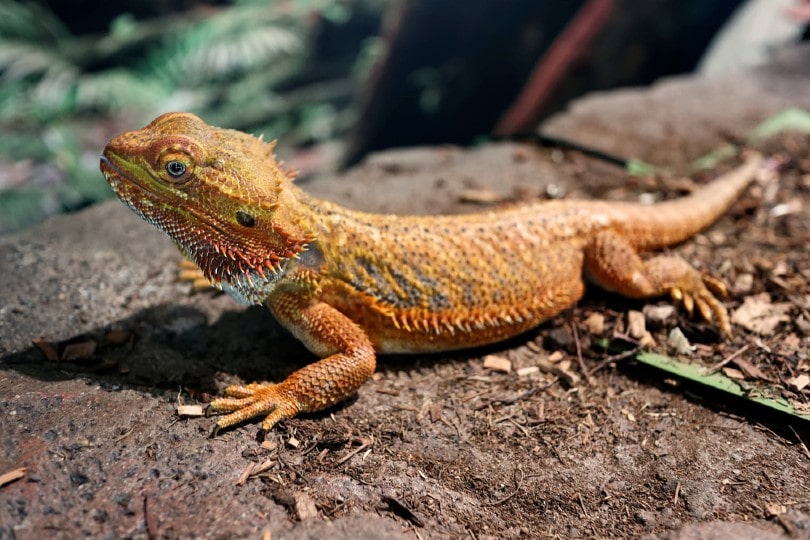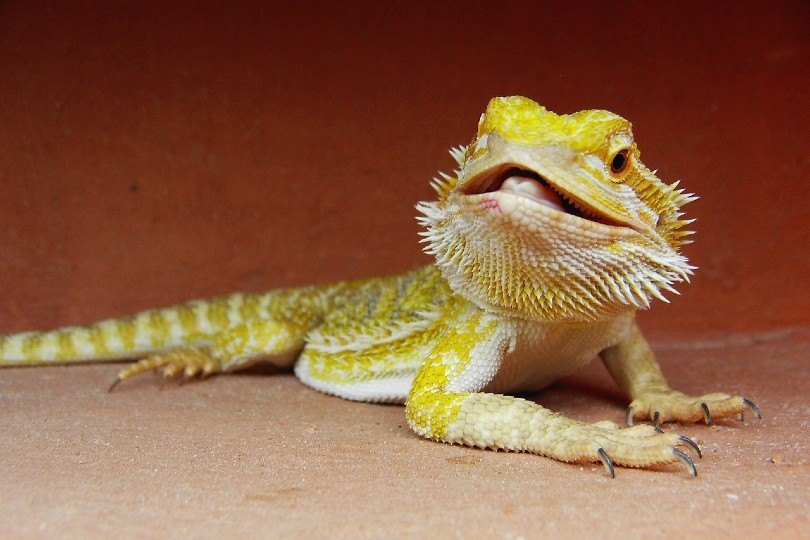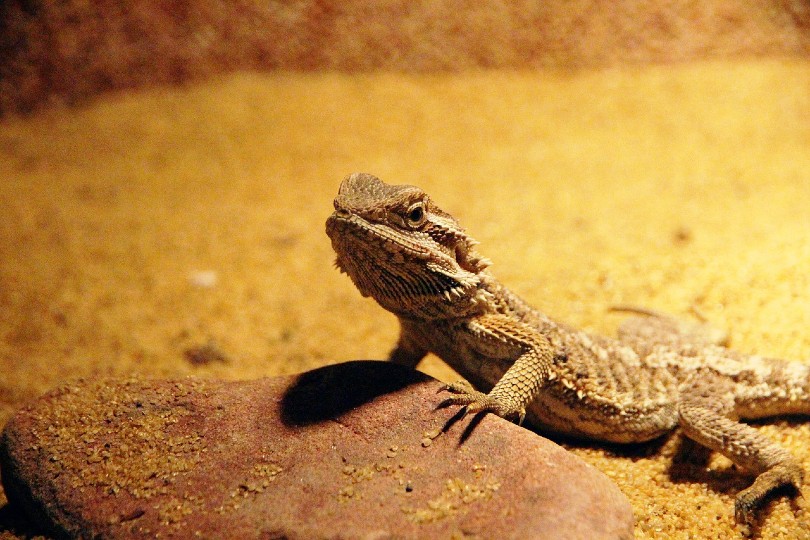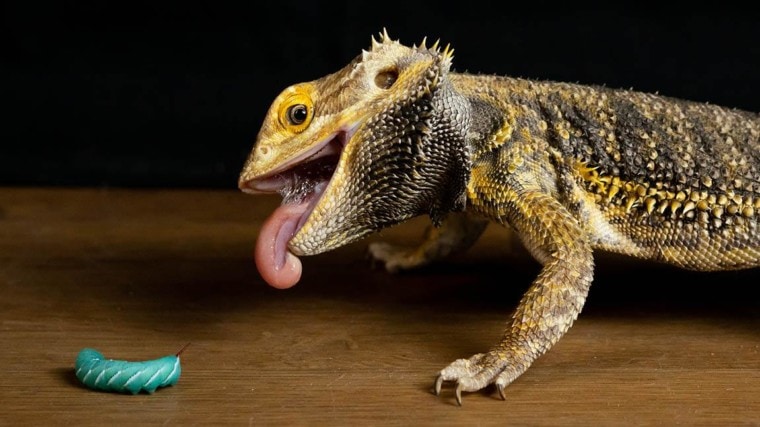
When you first get a new pet of any type, excitement is the only emotion you feel. However, this first phase lasts a very short time as the sudden realization sets in that you don’t really know how to properly care for this new pet! Your first bearded dragon is a stepping-stone into a lifetime of herpetological love, but you must figure out how to properly feed your dragon, which is exactly what you’ll learn in this article.

Bearded Dragon Feeding Chart By Age
| Age of Bearded Dragon | Quantity & Types of Food | Number of Meals per Day |
| 1-3 months | As many crickets as they’ll eat in 5-10 minutes + 20% veggies | 5 |
| 3-6 months | 50% veggies, 50% insects | 4 |
| 6-12 months | 50% veggies, 50% insects | 3 |
| 12-18 months | 50% veggies, 50% insects | 2 |
| Adult (18+ months) | 75% veggies, 25% insects | 2 |


How Much Food to Give Your Adult Bearded Dragon
Bearded dragons reach adulthood around 18 months of age when they become sexually mature. At this time, they’ll be down to just two feedings each day, comprised of 75% veggies and only 25% live insects.
Determining how much to feed your dragon is pretty simple. In fact, you’ll let your dragon determine how much to eat by only allowing a certain amount of time at each feeding. When feeding insects, you should allow just 10 minutes for your dragon to eat the insects, removing uneaten insects at the end of the time.
Vegetables and fruits work similarly. Once you put them in your dragon’s enclosure for feeding, only leave them in for 30 minutes. This gives your dragon time to eat its fill while preventing overfeeding and ensuring that leftover food doesn’t cause mold problems.
Feeding Baby and Juvenile Bearded Dragons
Baby bearded dragons, those that are less than 3 months old, need a diet that’s the exact opposite of an adult dragon. These baby dragons need 75% of their nutrition to come from live insects and just 25% to come from plants. You can split their feeding into five meals. During insect feedings, allow them 10 minutes to eat as many as they can. This could be as many as 50 crickets each day.
Once a dragon reaches 3 months, it’s considered to be a juvenile. Juvenile dragons need a diet that’s about 50/50 plants and live insects. Young juveniles will eat four times daily, but this number decreases to twice daily feedings as the dragon approaches adulthood.
Monitoring Your Bearded Dragon’s Feedings

You can tell a lot about your dragon’s needs by monitoring their feedings. Some dragons can be very picky eaters. Watching your dragon eat will make it easier for you to tell what foods they like and which ones they have no interest in.
You can also tell if you’re offering them the correct amount of food. If your dragon is eating every bit of the food you provide within the feeding window, then you might need to offer more food. On the other hand, if there’s always a lot of food left over when the feeding window closes, then you should start reducing the amount of food you’re offering.
What Do Bearded Dragons Eat?
Once you understand how bearded dragons eat, feeding them is a very simple process. They don’t have terribly diverse diets. In fact, their entire nutritional intake boils down to just two types of foods: plant matter and insects. Aside from this, you’ll also dust food items with a calcium supplement and provide a multivitamin supplement once each week.
Your bearded dragon will eat the same foods throughout its entire life. However, the percentage of plant-based foods versus live foods that your dragon needs will change as they age. Younger dragons require more protein, which they get from live insects. Adult dragons will eat fewer insects; the difference will be made up of fruits and vegetables.
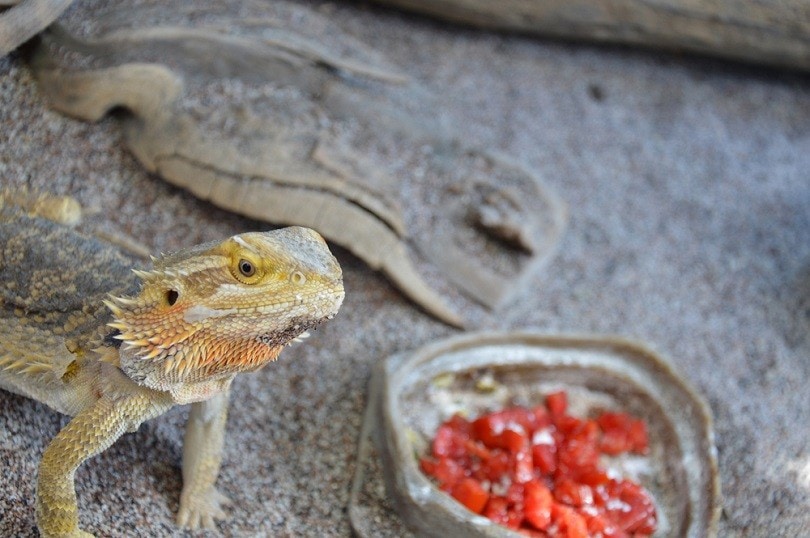

What Shouldn’t Bearded Dragons Eat?
Feeding a bearded dragon isn’t just about the foods they can eat. Equally important to consider are the foods that your bearded dragon should never eat. Some of these might seem like they’re perfectly fine to feed your dragon, but they’re not.
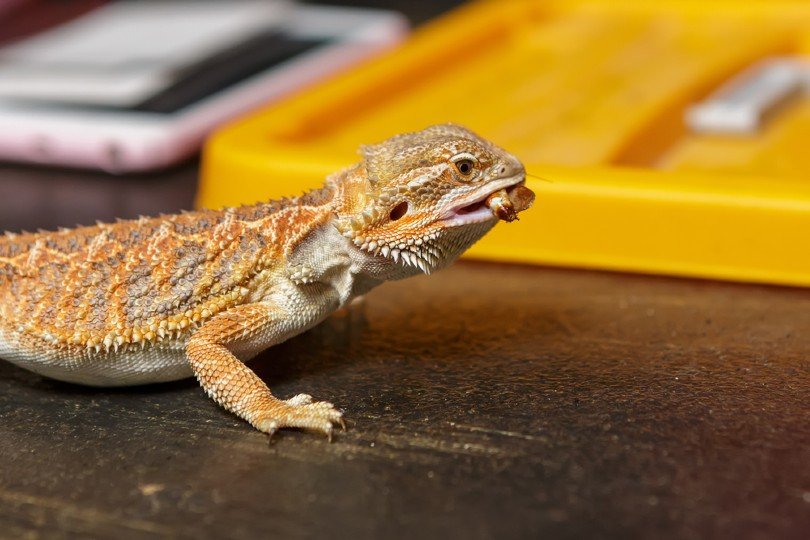
For instance, you never want to feed your bearded dragon any insects that you found in the wild, even if they’re part of your dragon’s normal diet. These insects can have parasites and diseases that could hurt or kill your dragon.
What’s the Best Live Food for Bearded Dragons?
There are many live insects you can feed to your bearded dragon. Dubia roaches are widely considered to be the absolute best live food for bearded dragons due to their incredibly high protein content. Furthermore, they’re very clean insects and tend to be much safer than crickets, which have been known to carry parasites.
Phoenix worms are also a great choice. They’re full of calcium, so they don’t require you to dust them in a calcium supplement. The downside with Phoenix worms is that they’re quite pricey.
Crickets tend to be the go-to choice for feeding bearded dragons. While they’re not necessarily the most nutritious choice of all, they’re highly accessible and dirt-cheap. They still offer plenty of nutrition to keep your dragon in great health.
Remember, dragons need a varied diet, so cycle through the insects you feed them. You can also offer other insects like wax worms, silkworms, and more; just make sure not to overfeed these as some of them can be quite fatty.
Also, it’s important to gut load any insects before offering them to your dragon. This will ensure your dragon is getting as much out of each meal as possible. Gut loading is when you stuff the insects full of nutritious food before feeding them to your dragon. You’ll need to gut load these insects for at least 24 hours before you give them to your dragon. You can gut load with special gut loading products or using various other foods like tropical fish food, puppy food, baby food, and more.
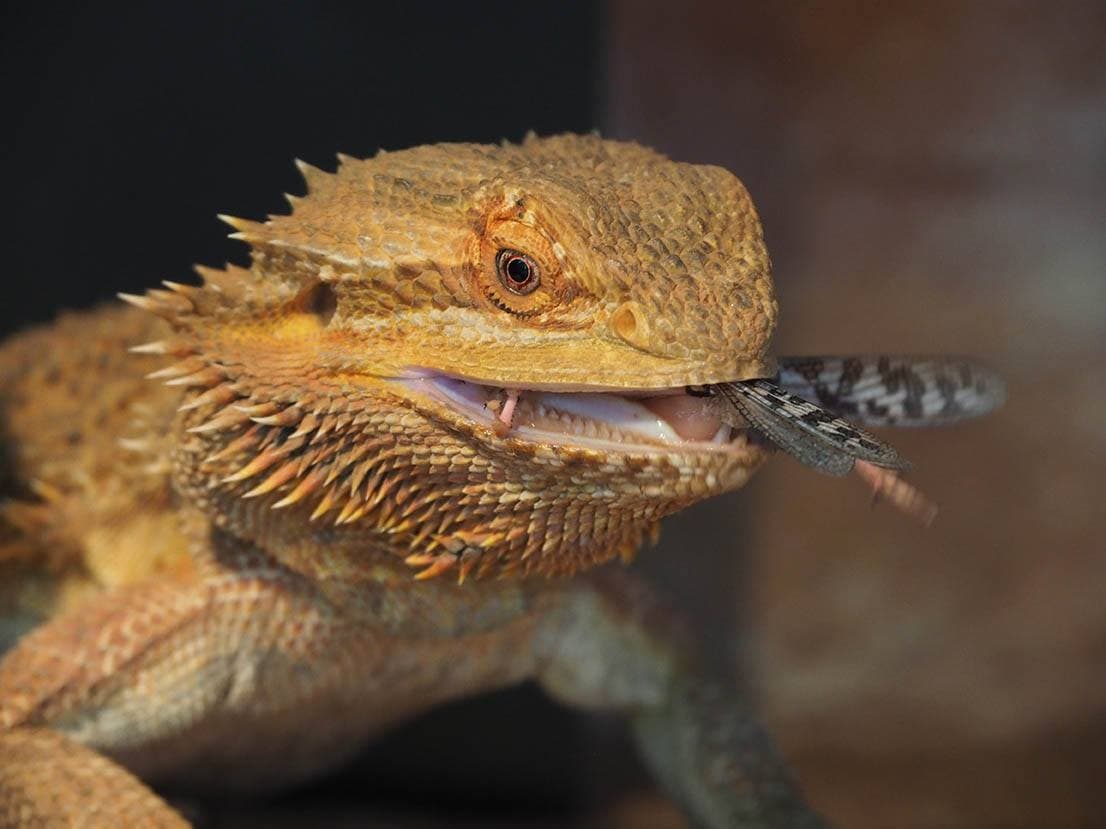
What to Do if Your Bearded Dragon Isn’t Eating
There are many reasons that dragons could refuse to eat. Stress is a big one. If you’ve recently changed your dragon’s environment, lighting, or diet, then they could be refusing to eat as a reaction to this, which will take a short time to sort out.
Dragons might also refuse to eat when they’re shedding. You can tell they’re shedding when scales become dull-looking and the tip of the tail turns gray.
Sick dragons may also refuse to eat. This could require a trip to the vet.
Temperature can also have a major effect on a dragon’s appetite. If it’s too cold, hot, or humid, it could stop your dragon from feeding, so check on all these basics if you notice your dragon isn’t eating like normal.
- Related Read: How Often Should a Bearded Dragon Poop?

Summary
Feeding a bearded dragon is a pretty simple process, but you’ll have to keep lots of insects, fruits, and vegetables on hand. Remember that the ratio of plants to insects your dragon needs will change throughout their life, even though the actual foods they eat remain the same. Baby dragons need more protein, adults need more plant matter. Juvenile dragons eat a diet that’s half insects and half plants. Keep these basic rules in mind and you’ll have no problem keeping your dragons healthy and happy for a long life.
- Next on your reading list: Fancy Bearded Dragon
Featured Image: Vic Rincon, Shutterstock

